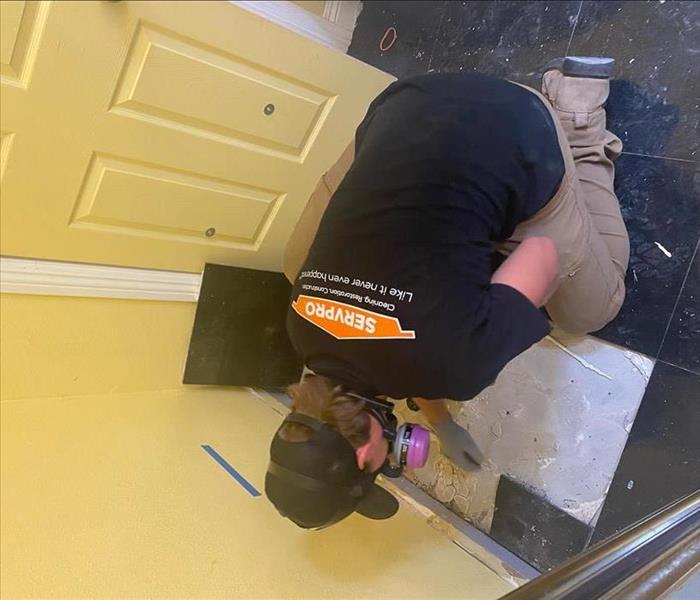Everything You Need to Know About Bathroom Mold: Causes, Prevention, and Removal
3/13/2024 (Permalink)
Mold growth in the bathroom is a common problem due to the high moisture levels found in this area. Not only is bathroom mold unsightly, but it can also deteriorate surfaces and cause potential health risks. Understanding the causes of bathroom mold, implementing preventive measures, and knowing how to effectively remove it is essential for maintaining a clean and healthy bathroom environment. In this blog, we will explore the causes, prevention, and removal of mold in the bathroom.
Causes of Mold in the Bathroom
Excess Moisture: Bathrooms are prone to excess moisture due to activities like showering, bathing, and washing. This moisture, along with the lack of ventilation, creates an ideal breeding ground for mold spores to grow and thrive.
Poor Ventilation: Inadequate ventilation can lead to moisture buildup, encouraging mold growth. Bathrooms with no or insufficient windows, exhaust fans, or proper airflow can trap moisture and promote the development of mold.
Leakages: Leaking pipes, faucets, and fixtures contribute to excess moisture in the bathroom. These hidden sources can go unnoticed for an extended period, creating the perfect environment for mold to flourish.
Prevention of Mold in the Bathroom
Proper Ventilation: Install an exhaust fan or use a window to facilitate air circulation and remove excess moisture from the bathroom. Ensure the fan is appropriately sized for the room and vented to the outside to prevent mold spores from circulating back into the bathroom.
Regular Cleaning: Regularly clean and dry bathroom surfaces to prevent mold growth. Wipe down wet surfaces such as shower walls, tubs, and sinks after each use. Use a squeegee or towel to remove excess moisture and discourage mold growth.
Fix Leaks: Promptly repair any leaks or water damage in pipes, faucets, or fixtures to prevent moisture accumulation. Regularly inspect and maintain plumbing systems to avoid potential mold problems.
Reduce Humidity: Use a dehumidifier or open windows to reduce humidity levels in the bathroom. Lowering humidity discourages mold growth and promotes a healthier bathroom environment.
Removal of Mold from the Bathroom
Safety Precautions: Before starting the mold removal process, take necessary safety precautions, such as wearing gloves, goggles, and a mask to prevent exposure to mold spores. Ensure the area is well-ventilated to minimize inhalation of mold particles.
Cleaning Products: Use mold cleaning products that are specifically designed for bathroom mold remediation. Look for products that contain ingredients such as sodium hypochlorite or hydrogen peroxide, which are effective in killing mold spores. Follow the instructions on the product for proper use and safety.
Scrubbing and Drying: Scrub the moldy area with a brush or sponge and the mold cleaning product. Thoroughly rinse the area and ensure it is completely dry. Drying the area prevents further mold growth and reduces the chances of moisture-related issues.
Professional Mold Remediation: When dealing with extensive or persistent mold growth, it is advisable to seek professional mold remediation services. Trained professionals, like SERVPRO®, can accurately assess the extent of mold damage, ensure proper removal, and address the underlying causes to prevent future mold recurrence.
Preventing and removing mold in the bathroom is vital for maintaining a clean and healthy environment. By addressing the causes of bathroom mold, implementing preventive measures, and using appropriate cleaning products, you can effectively control mold growth. Regular cleaning, proper ventilation, and prompt repair of leaks are key preventive strategies. If mold growth persists or becomes extensive, it is best to consult professionals to ensure thorough and safe mold remediation.






 24/7 Emergency Service
24/7 Emergency Service
